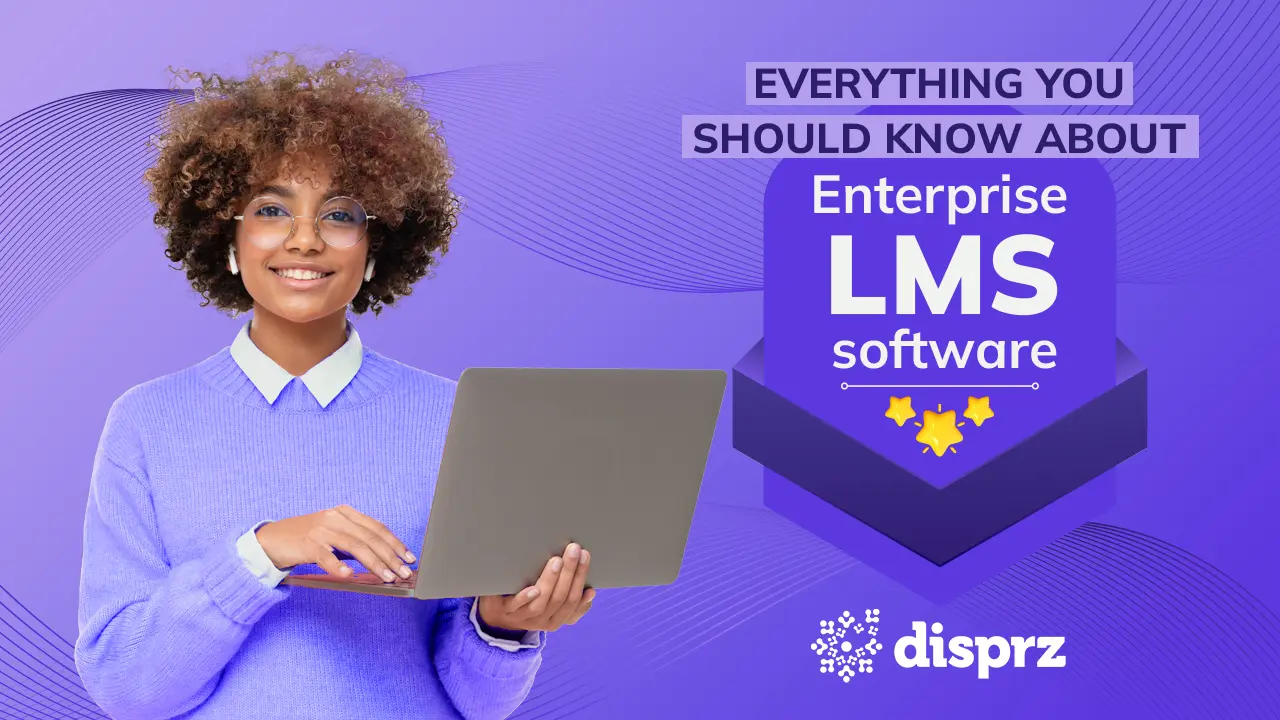
6 min read
• 17 Oct 2023
Microlearning or Macrolearning: How retailers can blend the two for skill acquisition harmony
Microlearning and macrolearning are two powerful learning approaches that can be blended to create a greater impact.
-
eBookEmployee Upskilling - A Detailed Blueprint For Building A Skills-Driven Learning Culture
The retail industry saw a dramatic shift in the last two years. Whether embracing a digital-first approach or pivoting to omnichannel, retailers have changed their approach and walked the extra mile to respond to the challenges posed by the pandemic. However, due to this paradigm shift, many skills have become obsolete, forcing enterprises to rethink their learning and development strategies.
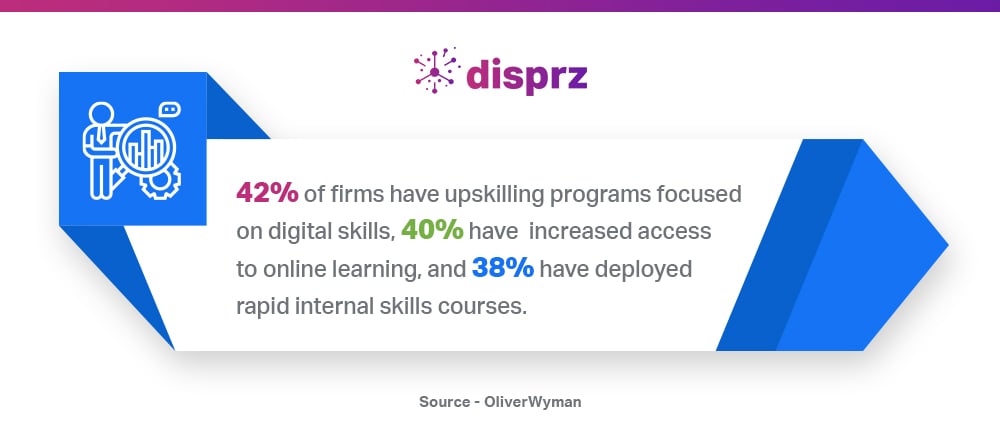
Employee empowerment for providing a great customer experience has become a top priority in several retail organisations. Pre-covid, retailers used to focus on functional training to increase sales now they are additionally giving importance to safety training to increase customer walk-ins. Moreover, with the rise of the phygital trend, the need to develop an agile learning culture has increased.
60% of companies experience growth in profits after adopting an Agile approach.
The phygital retail model blends the physical and digital world to offer an enhanced buying experience. However, this has led to an increase in customer demand and expectations.
Concepts like microlearning and macrolearning have suddenly gained momentum to upskill and reskill the employees for meeting these demands and offering convenient buying and after-sales experience to the B2B and B2C customers.
But the question that arises here is which is more effective for the modern retail learning culture? Microlearning or macrolearning?
Well, we will delve deeper into both these concepts to find out if we need to choose one of them or blend both to unlock the full potential of retail employees and vendors.
Microlearning – Anytime, anyplace learning for busy retail employees
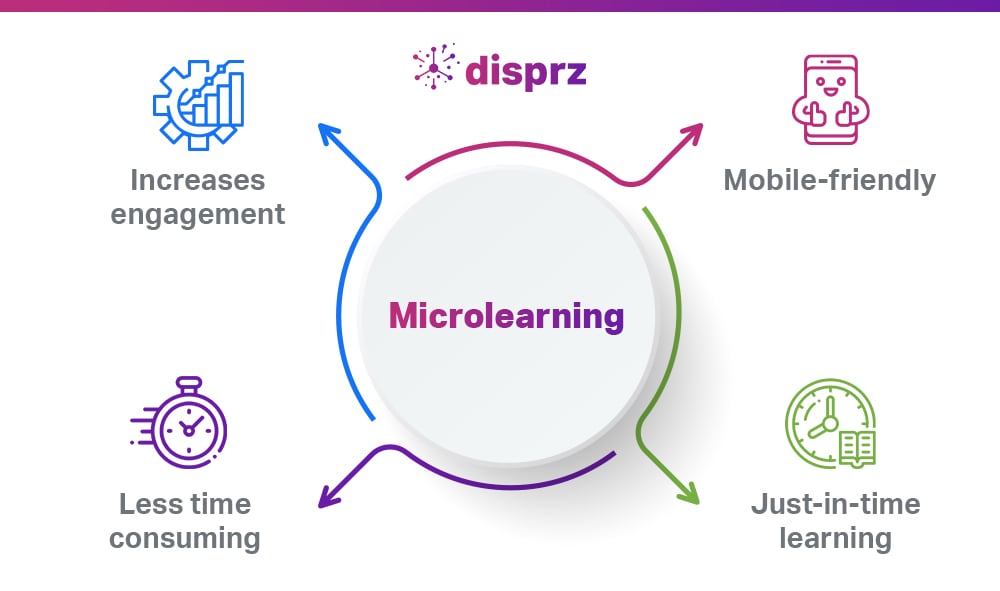
Microlearning touches the corners that macrolearning often fails to reach. It moves beyond the classroom and instructor-led training and gives employees the flexibility to learn from anywhere at their own pace. This level of learning freedom is pivotal in a challenging industry like retail, where trends and policies change rapidly.
The transfer of learning is 17% more efficient with microlearning.
Moreover, retail has a peak and valley pattern due to market fluctuations. Employees need to stay on their toes to offer optimum performance during various festivals and end or mid-season sales. Bite-sized learning helps retail employees upskill and adapt to the constantly changing retail landscape.
Employees are more engaged when learning is provided in short bursts that last up to a maximum duration of 7 to 11 minutes.
Whether it’s a physical store, a digital store or a retail business that focuses on offering a phygital experience, the employees are often pulled in multiple directions due to high workload. In addition, with too much on their plate, retaining knowledge becomes challenging, especially when they are overloaded with information.
Within 30 days, 80% of learning is forgotten .
Microlearning has the power to negate the effect of the forgetting curve by refreshing the learner’s knowledge periodically. Retail employees can instantly apply what they’ve learned to their day-to-day tasks.
Moreover, it becomes easier to keep retail employees updated about the new products or changes in procedures and policies with knowledge nuggets. While travelling or during downtime, retail employees can easily make time to absorb new information and enhance their skills through microlearning.
Microlearning can boost engagement to more than 50%.
Macrolearning – Wide breadth of learning for structured retail skill building
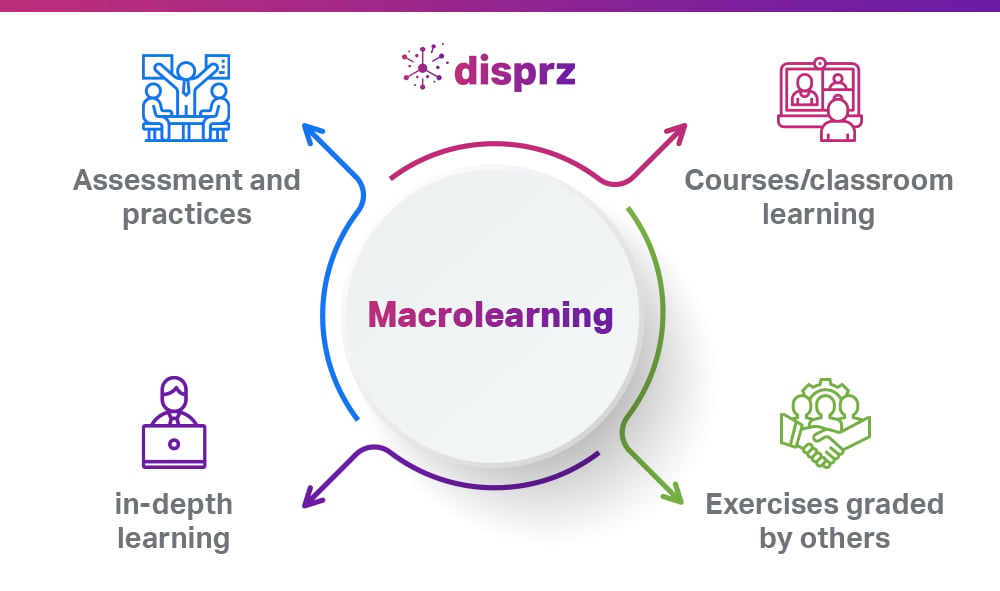
macrolearning is apt for teaching larger concepts to retail employees. For instance, how to upsell and cross-sell in retail or training on a new product, its usage, benefits and USP’s when compared to the competitors.
It focuses on creating impactful learning pathways for achieving long term results. macrolearning often consumes several hours or days as it comprises dissemination of knowledge, assessment and feedback. Experiential learning, instructor-led seminars, coaching and online courses are a few ways of delivering macrolearning .
As per a survey, 35% of retail employees said training is “very effective” in helping them do their job well, and only 31% said that training makes them feel “extremely engaged,”
macrolearning is ideal for onboarding, compliance training and change management training. It helps in providing an in-depth understanding of a complicated and diverse subject.
A hybrid approach with blended learning
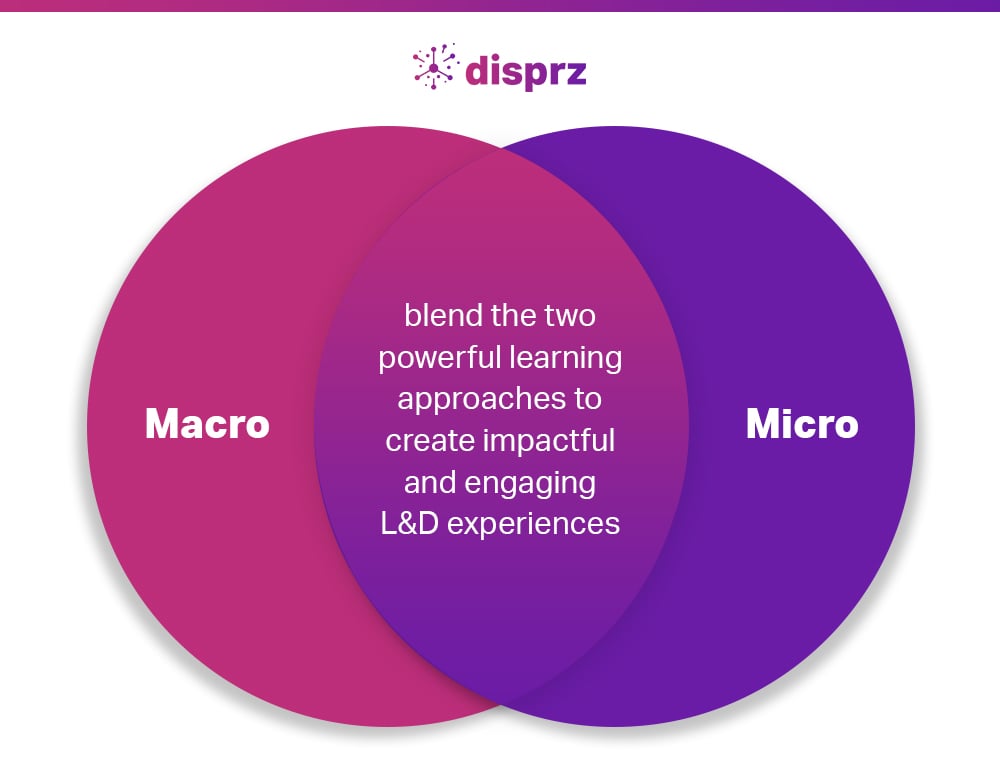
So, have we figured out which is better, micro or macrolearning?
Well, that’s like asking is chicken better than turkey. But better for what?
It depends on what you want to make, a chicken burger or a turkey sandwich. Or you can blend both and even make a Turkey and Chicken Submarine Sandwich.
Microlearning and macrolearning are two powerful learning approaches that can create a great impact if used the right way at the right time. They don’t need to each other’s substitute.
One misconception bubble that we need to burst is that Microlearning DOESN’T replaces macrolearning or vice versa. Both can coexist and be used to train your retail employees through blended learning. For instance, microlearning can be used to prepare the employees for online/classroom learning. They can get a glimpse of what they will learn in the detailed learning sessions through snippets or short videos. The retail employees can even get acquainted with a new product through microlearning and later delve deeper into the functionalities with detailed training using macrolearning.
Taking the right learning and skilling approach can improve employee productivity and have a strong impact on the business bottom line. In retail, employees are the face of the company; by providing satisfactory buying experiences to the customers, they can encourage positive word of mouth. This can help boost the growth and revenue of the retail business.
How retailers can create the best of both worlds inside disprz
It is crucial to blur the line between micro and macrolearning. But how? Well, disprz can help. This complete skilling suite offers both microlearning and macrolearning on a single platform. It even offers a mobile learning solution that busy retail employees can access at any hour of the day to enhance their skills and offer a better experience to the customers.
You can begin with microlearning through flashcards, infographics, and videos to create awareness about a specific subject. Later you can switch to macrolearning by creating a personalized learning journey with assessment at various intervals.
One of India’s leading pharmacy retail chains used disprz to amplify efficiency and drive optimum employee performance.
They could conduct onboarding at scale within 30 days using macrolearning and reduce time to productivity. Moreover, they could keep the retail employees up to date with microlearning content on how to stock up medicine, prescribe the right drugs etc.
Click Here to check out the full case study on how the retail firm reduced in-class training time and upskilled employees at all their stores across India.
Win in the digital-first retail world by onboarding, right-skilling, and unlocking the potential of employees with disprz a complete skilling suite
See a preview to experience disprz in action.

About the author

Debashree Patnaik
Debashree is a seasoned content strategist at Disprz.ai, specializing in enterprise learning and skilling. With diverse experience in B2B and B2C sectors, including ed tech, she leads the creation of our Purple papers, driving thought leadership. Her focus on generative AI, skilling, and learning reflects her commitment to innovation. With over 6 years of content management expertise, Debashree holds a degree in Aeronautical Engineering and seamlessly combines technical knowledge with compelling storytelling to inspire change and drive engagement.
More Resources
4 min read
• 15 Apr 2024
Unlocking the Power of Managerial Engagement in Talent Development
4 min read
• 09 Apr 2024
Nurturing Excellence in Building Leadership Pipelines
Sign up to get free resources and stay up to date with Disprz!
Discover how Disprz can align learning and upskilling with your desired business outcomes.
